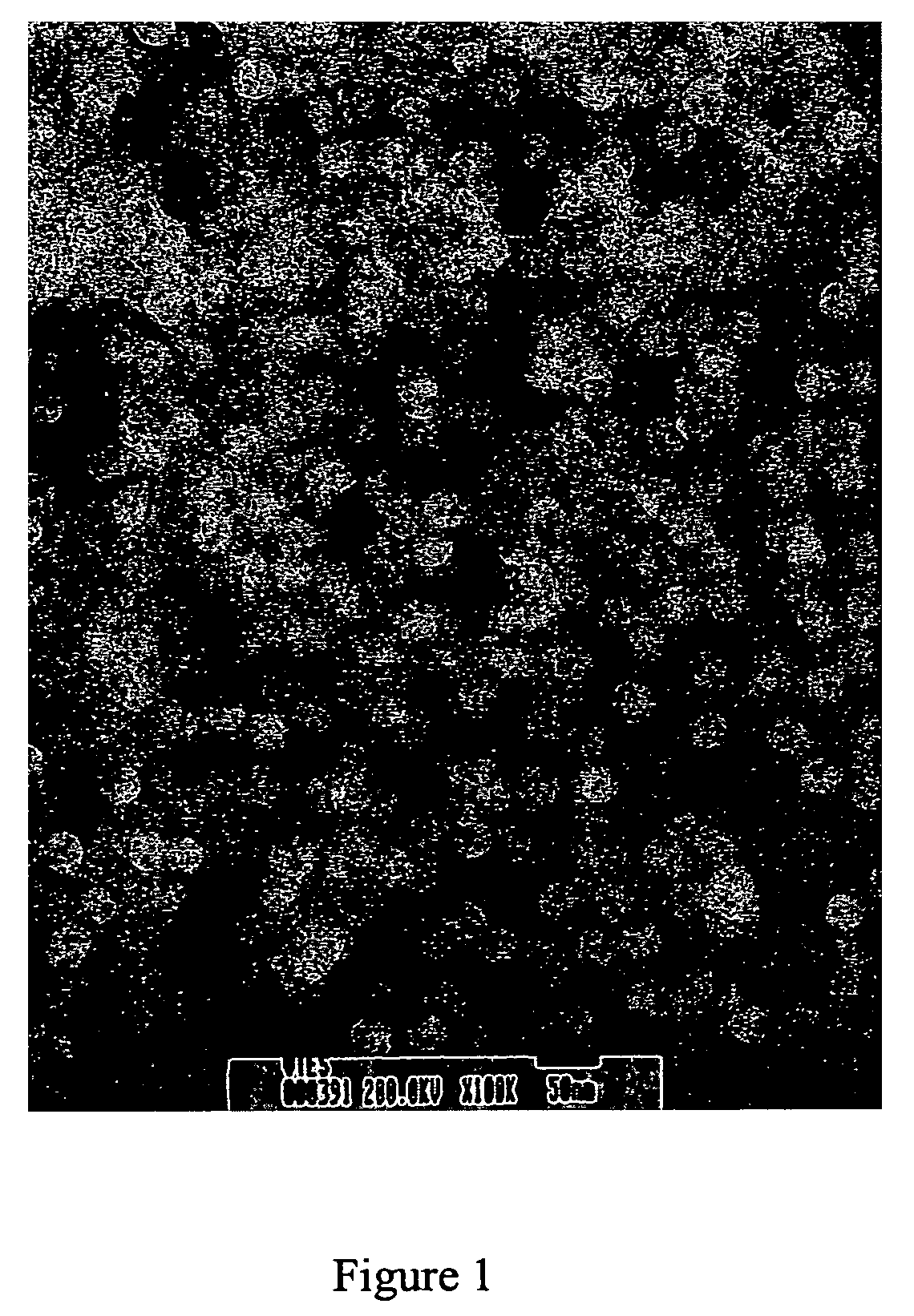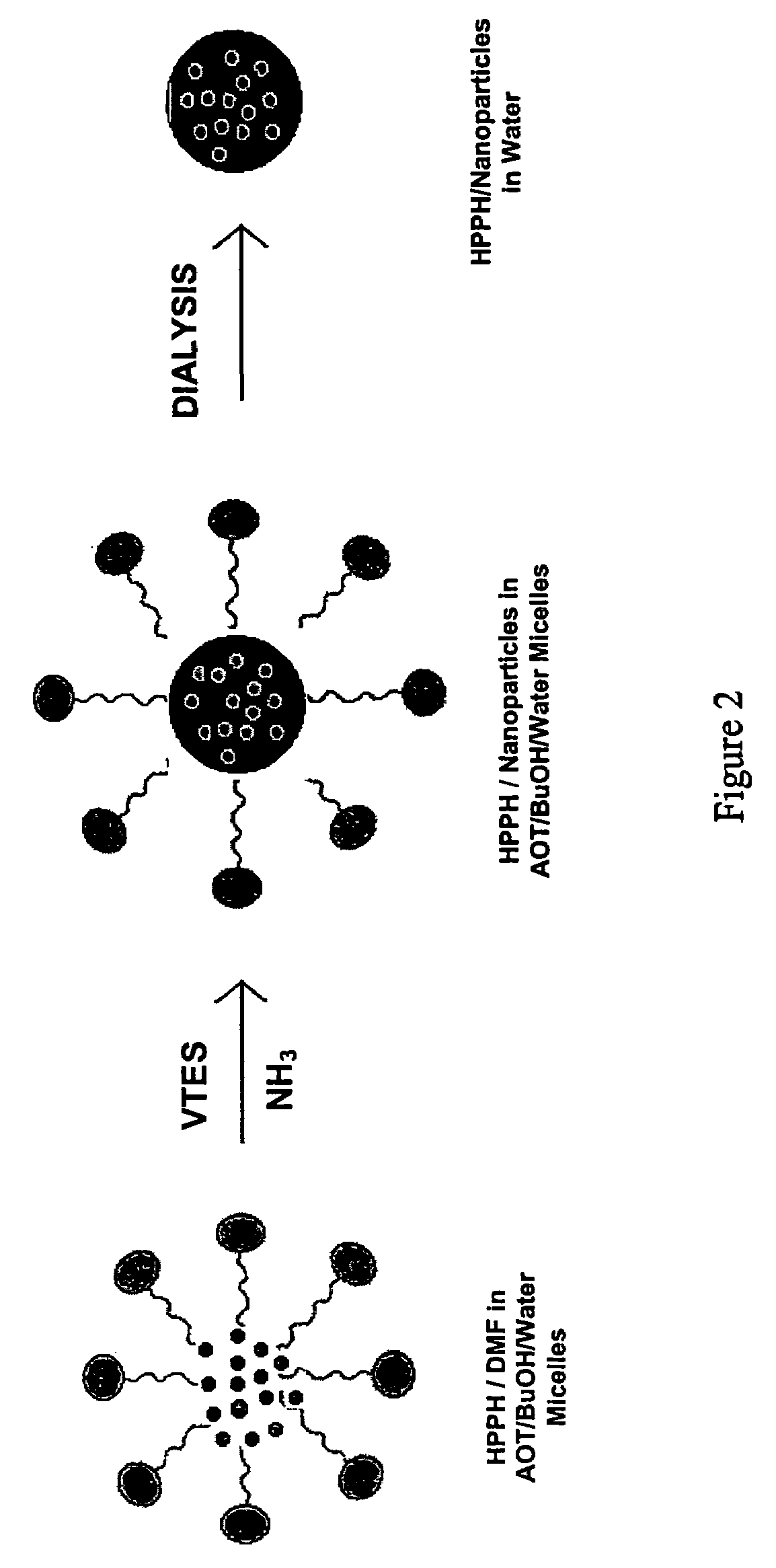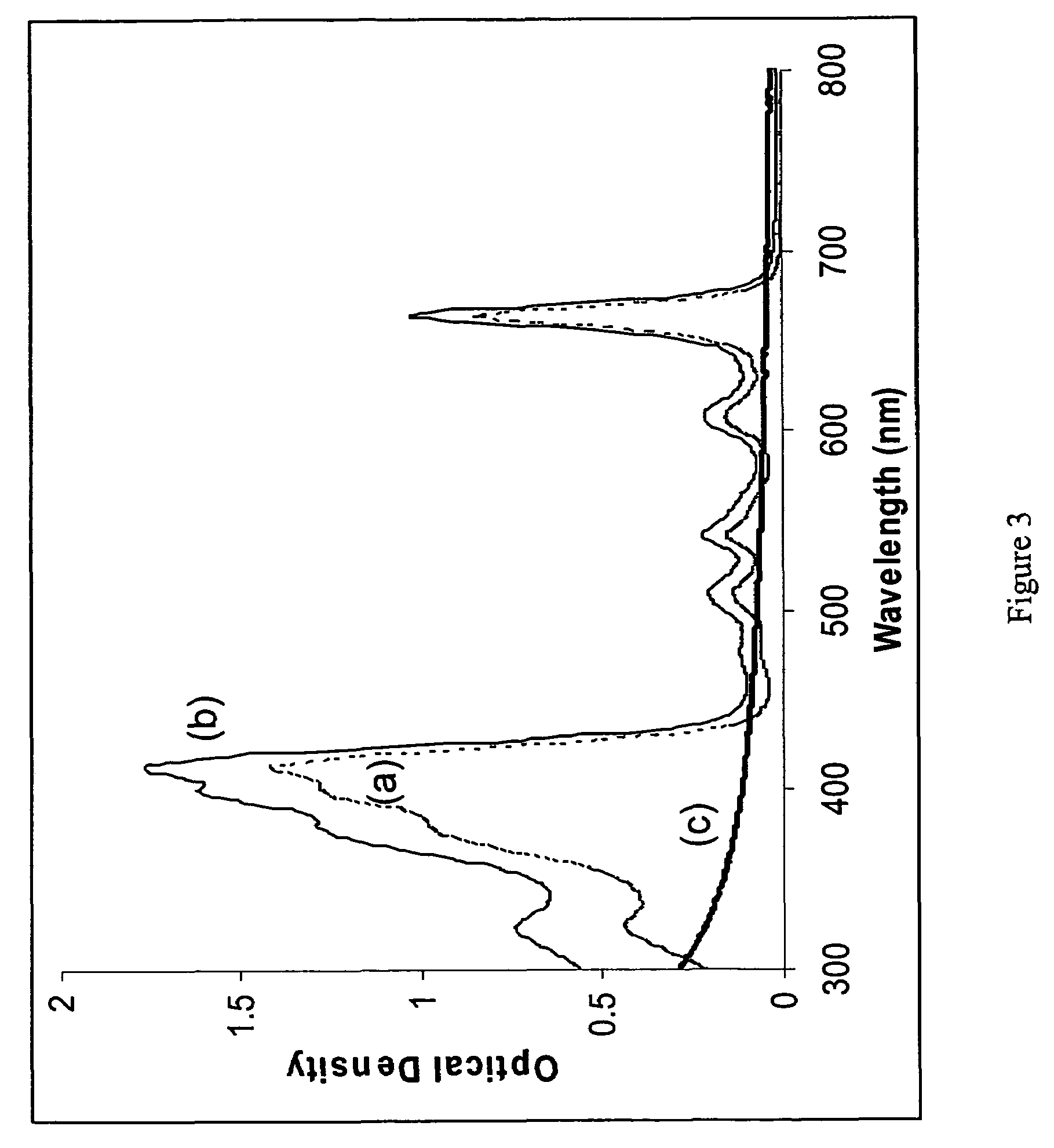Ceramic based nanoparticles for entrapping therapeutic agents for photodynamic therapy and method of using same
a nanoparticle and photodynamic therapy technology, applied in the field of photodynamic therapy, can solve the problems of irreversible destruction of such impregnated cells, and achieve the effect of preventing the drug from releasing the fluorescence of the drug a large amoun
- Summary
- Abstract
- Description
- Claims
- Application Information
AI Technical Summary
Benefits of technology
Problems solved by technology
Method used
Image
Examples
example 1
[0030]This example describes the preparation of the drug-loaded silica nanoparticles. To illustrate this embodiment, silica particles loaded with HPPH were synthesized. Surfactant Aerosol OT (AOT, 98%), Co-surfactant n-Butanol (99.8%), and Triethoxyvinylsilane (VTES, 97%), were purchased from Aldrich. MTT and isopropanol are a product of Sigmna. Deuterium oxide (99.9 Atom % D) was obtained from Isotec Inc., USA. Dye / Drug HPPH 2-devinyl-2-(1-hexyloxyethyl)pyropheophorbide[38] was a kind gift from Dr. Tom Dougherty, Roswell Park Cancer Institute, Buffalo, N.Y. Dye anthracenedipropionic acid-disodium salt (ADPA) was purchased from Molecular Probes, USA. Cell-Culture products like medium MEM-alpha, 5% Fetal Bovine Serum (FBS), Phosphate Buffered Saline (PBS) etc. were purchased from GIBCO, USA. All the above chemicals were used without any further purification.
[0031]The nanoparticles, both void and drug-loaded, were synthesized in the non-polar core of AOT / n-Butanol / Water micelles, as s...
example 2
[0033]This example demonstrates that the emission characteristics of the entrapped drug is the same as the unentrapped drug. To illustrate this embodiment, UV-Visible absorption Spectra of the silica particles in which the drug was entrapped and free drug was recorded on a Shimadzu (Columbia, Md.) UV-3101 PC Spectrophotometer, using 1 cm thick Quartz Cuvettes and fluorescence Spectra was recorded on a Shimadzu RF 5000U Spectrofluorimeter using 1 cm thick Quartz cuvette. The UV-Visible absorption spectra of HPPH, in AOT / BuOH / Water micelles as well as entrapped inside nanoparticles show the same peak positions for the two (FIG. 3). This demonstrates that there is no shift in peak position of HPPH upon entrapment inside nanoparticles. A control experiment, using void nanoparticles, shows virtually no absorption in the visible and Near Infra-Red (NIR) wavelength region (600-900 nm), which is the region of interest (Therapeutic Region) in PDT due to the high tissue penetration of light. ...
example 3
[0035]This example demonstrates the generation of singlet oxygen by the entrapped drug as detected by phosphorescence spectra. Detection of singlet oxygen (1O2) has been extensively reported by its phosphorescence emission spectra at 1270 nm [34, 35]. Since the lifetime of 1O2 in water is very low (2-5 μs) and hence its detection by the above method is very difficult, we have used Deuterium Oxide (D2O) owing to the enhanced lifetime (50-60 μs) of 1O2 in this solvent [36]. In a typical experiment, 3 mL of 22.5 μM HPPH, entrapped in nanoparticles dispersed in D2O, was used. HPPH solubilized in AOT / BuOH / D2O micelles and void nanoparticles in D2O were used as positive and negative controls, respectively. A SPEX 270M Spectrometer (Jobin Yvon) equipped with In—Ga—As photodetector (Electro-Optical Systems Inc., USA) was used for recording singlet oxygen phosphorescence emission spectra. A solid-state diode-pumped laser (Verdi, Coherent) was used as a source of excitation (532 nm). A 1 cm t...
PUM
| Property | Measurement | Unit |
|---|---|---|
| size | aaaaa | aaaaa |
| diameter | aaaaa | aaaaa |
| diameter | aaaaa | aaaaa |
Abstract
Description
Claims
Application Information
 Login to View More
Login to View More - R&D
- Intellectual Property
- Life Sciences
- Materials
- Tech Scout
- Unparalleled Data Quality
- Higher Quality Content
- 60% Fewer Hallucinations
Browse by: Latest US Patents, China's latest patents, Technical Efficacy Thesaurus, Application Domain, Technology Topic, Popular Technical Reports.
© 2025 PatSnap. All rights reserved.Legal|Privacy policy|Modern Slavery Act Transparency Statement|Sitemap|About US| Contact US: help@patsnap.com



